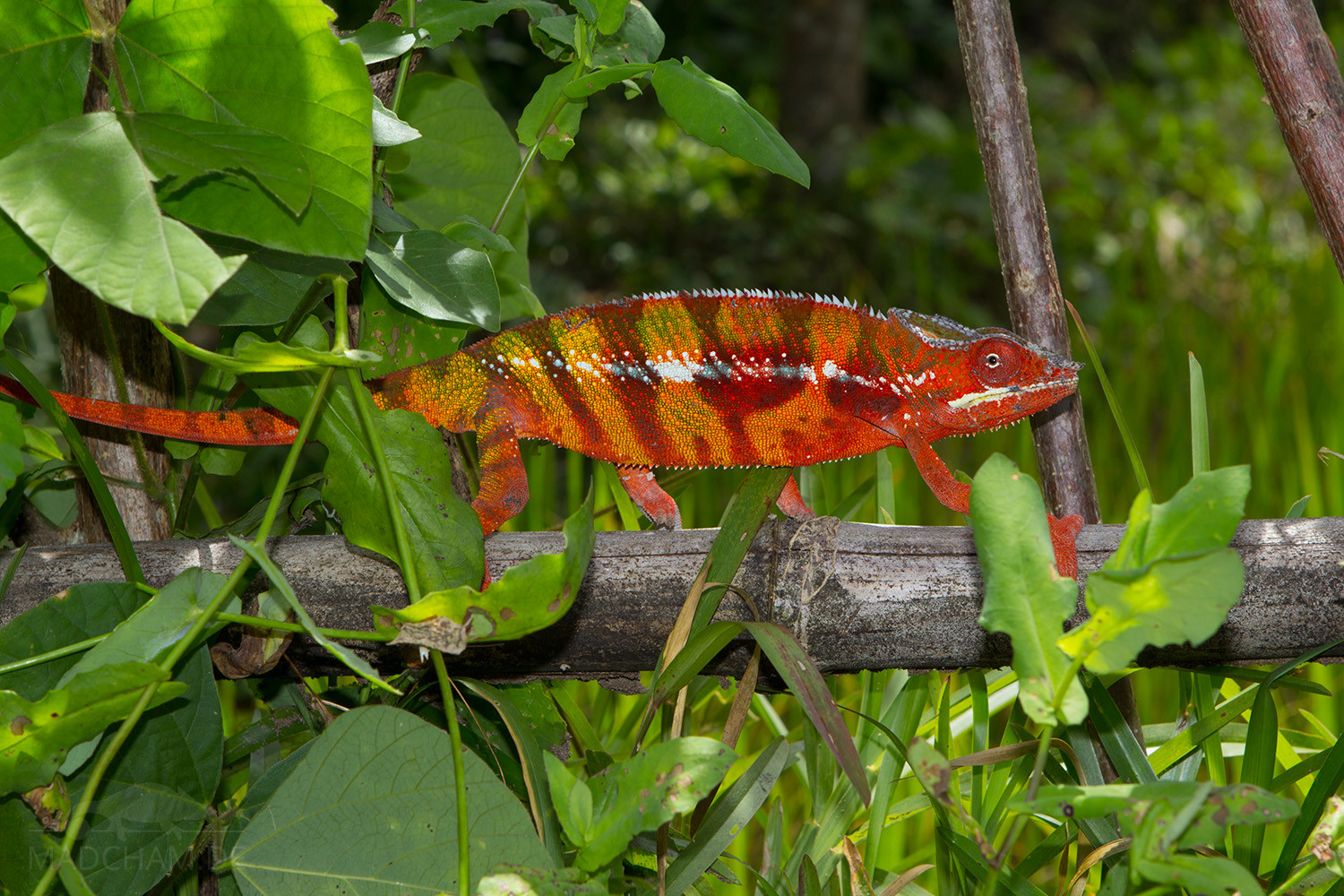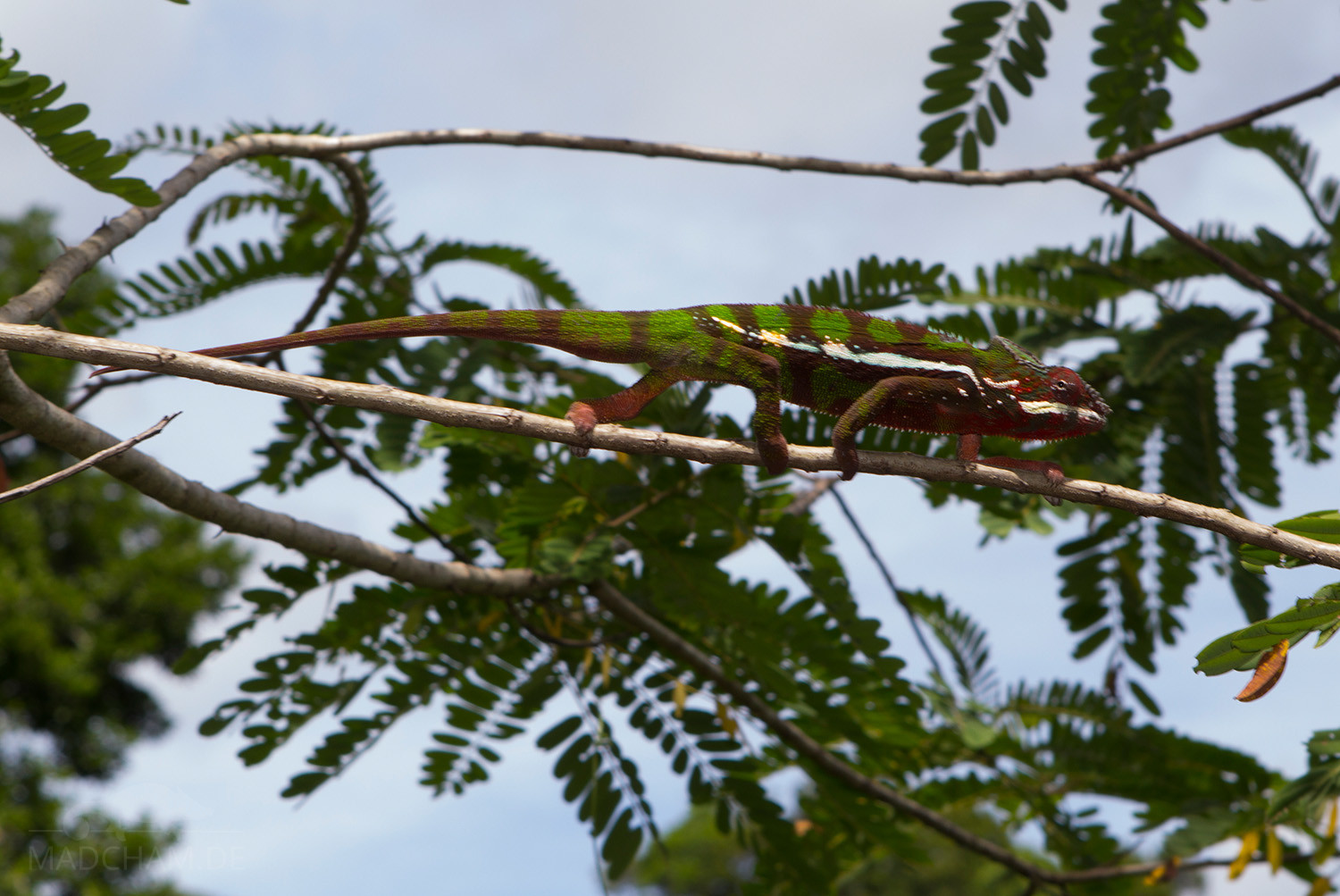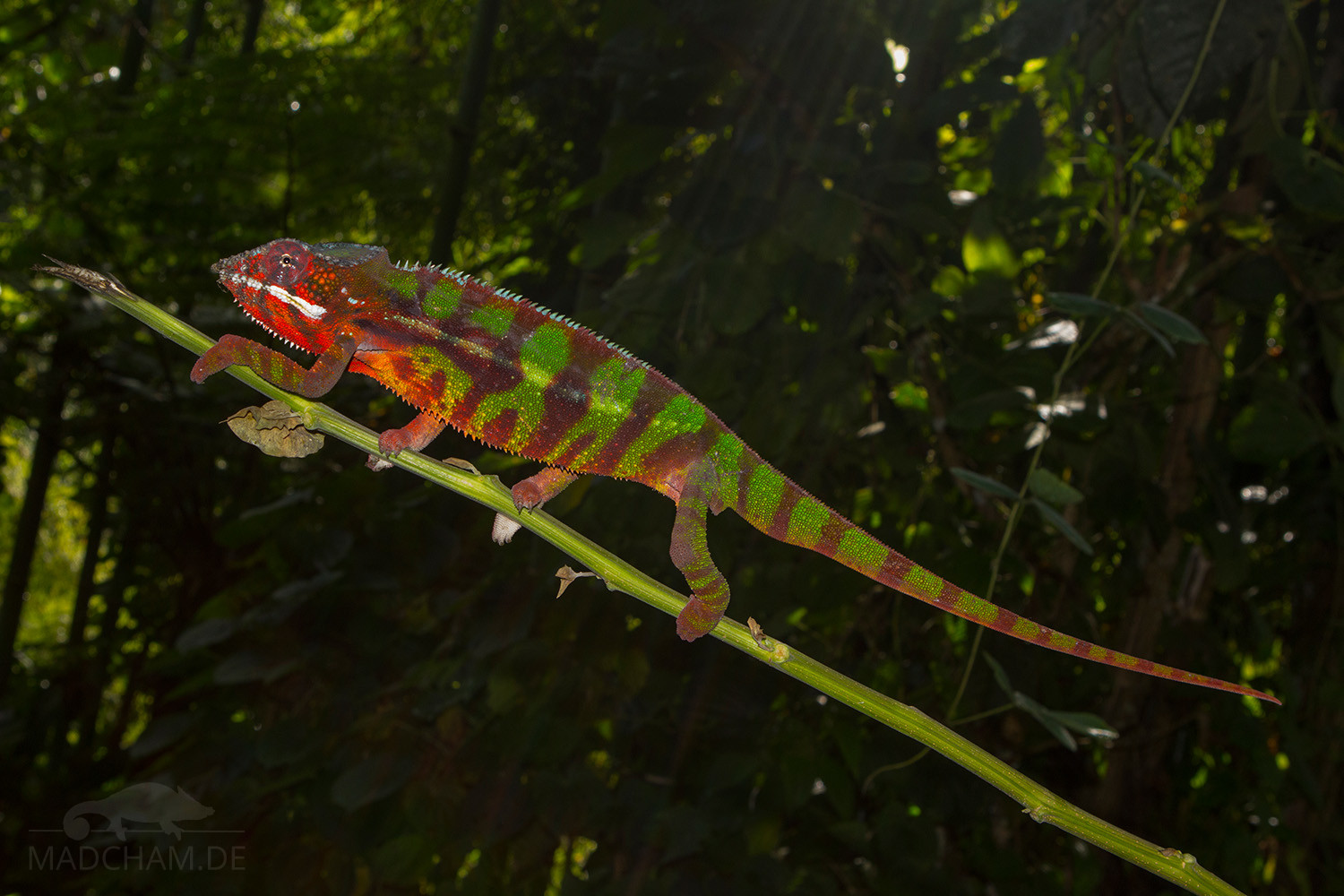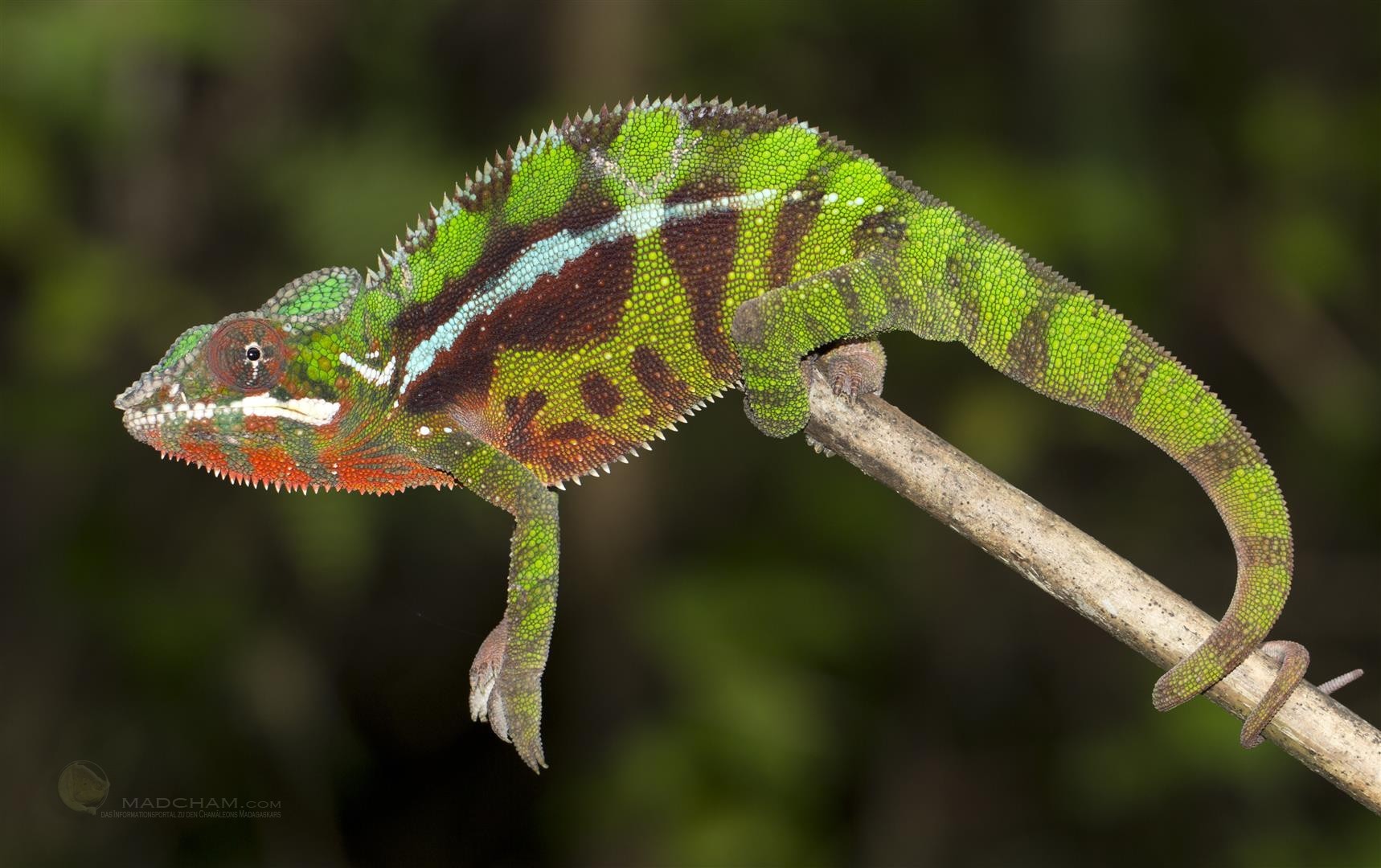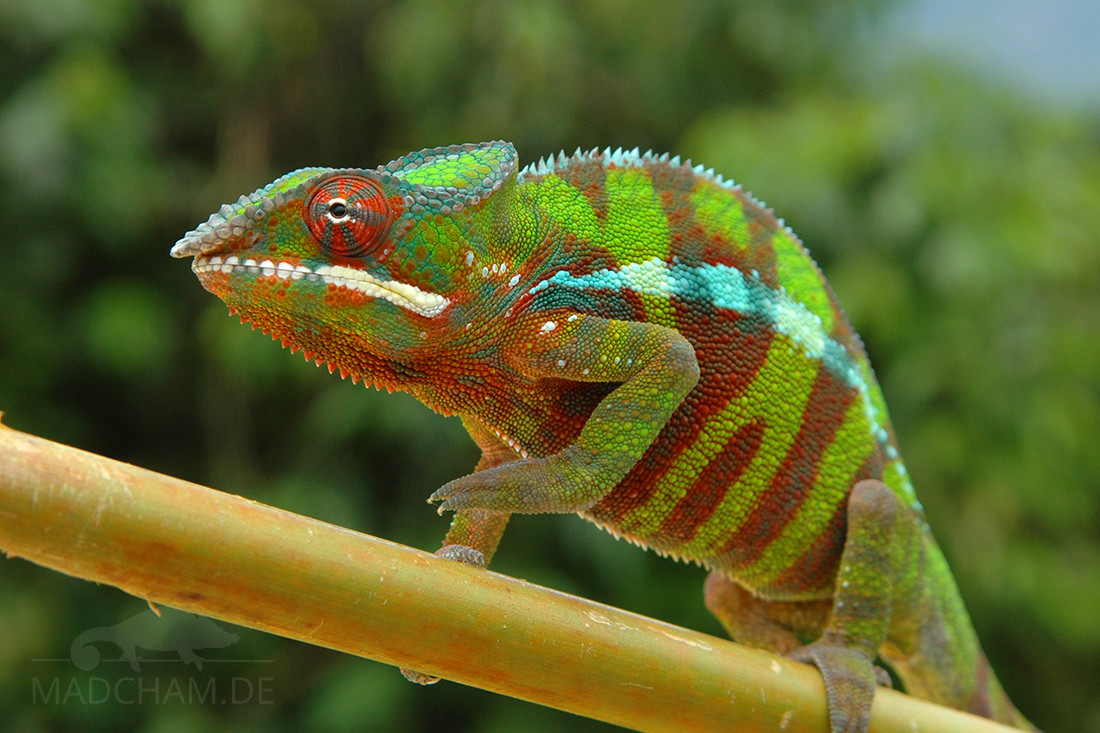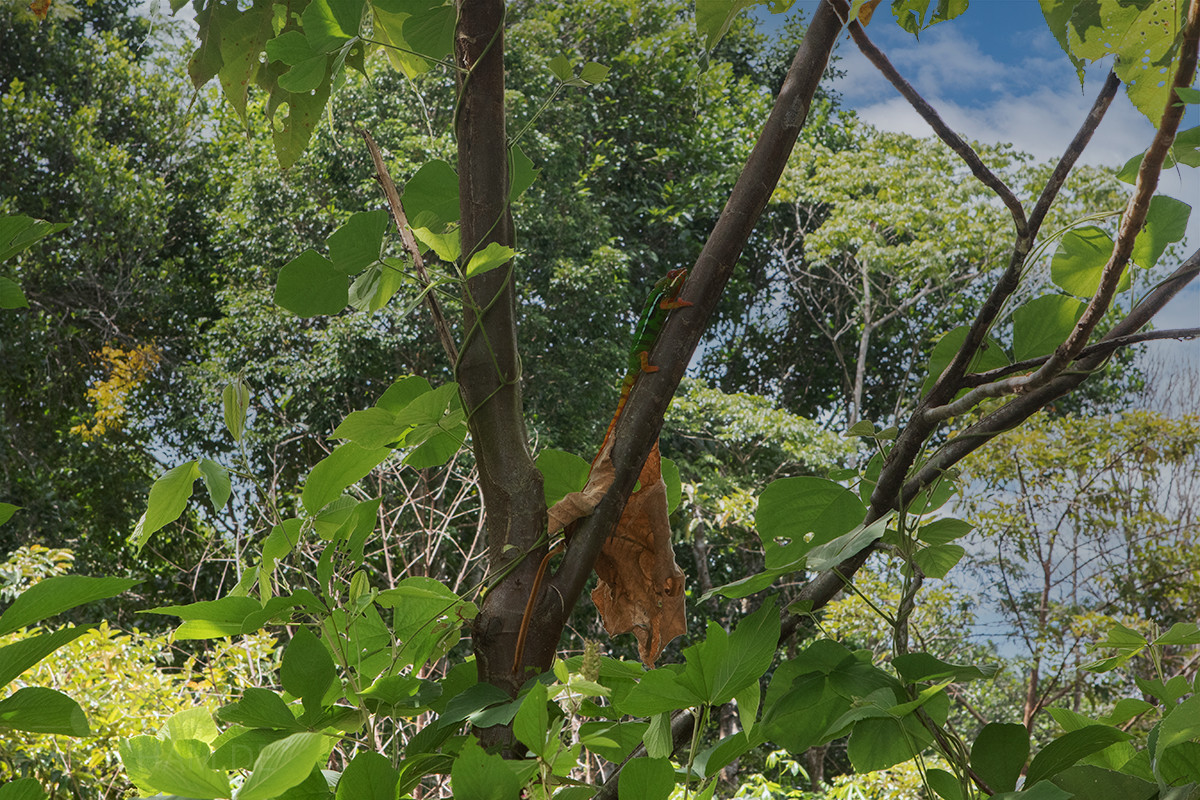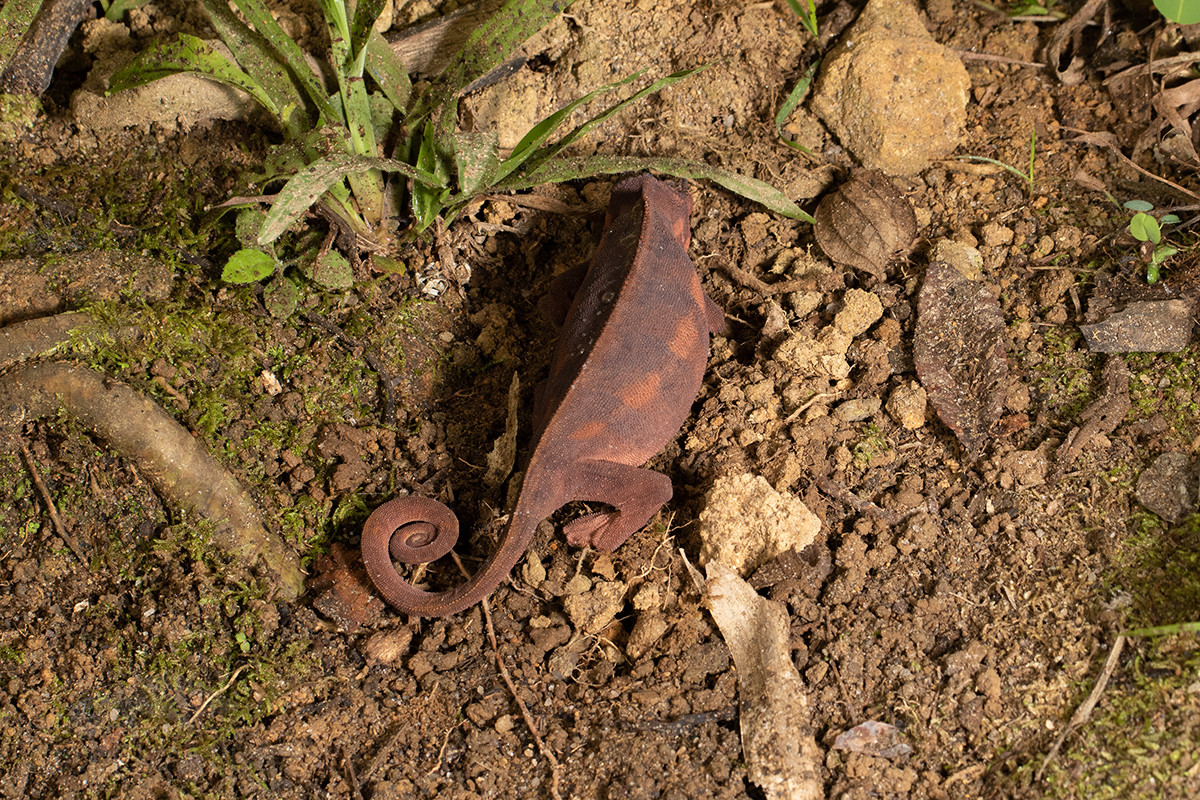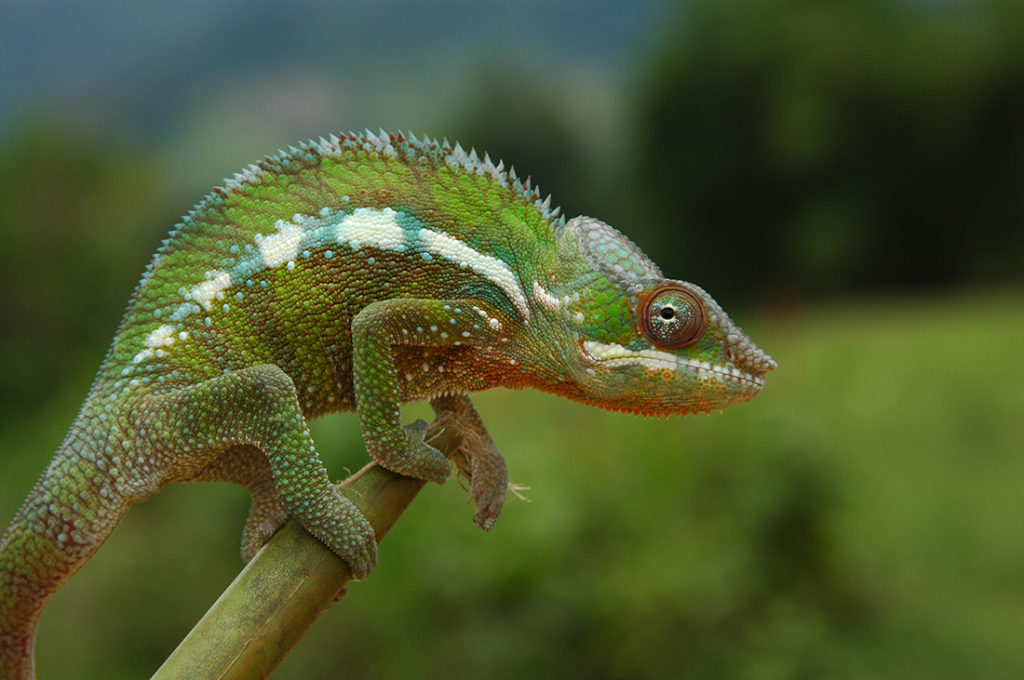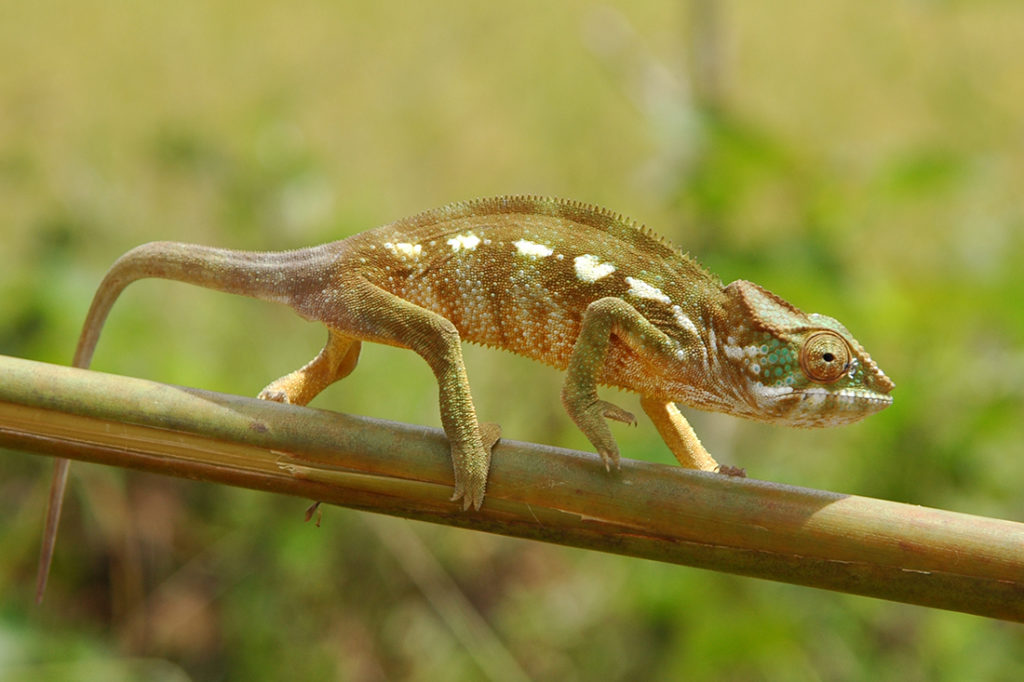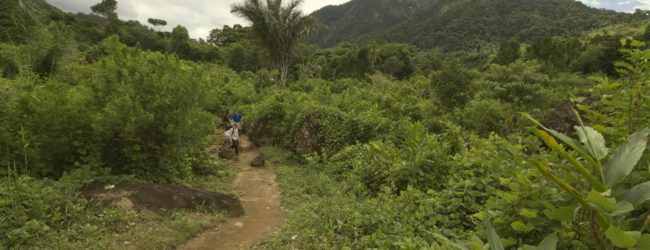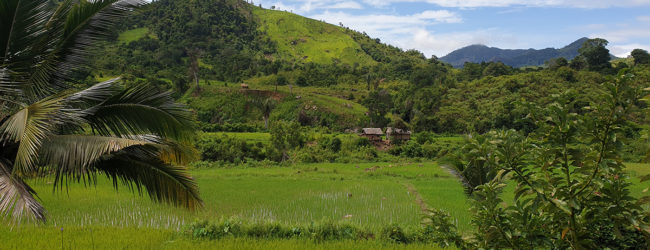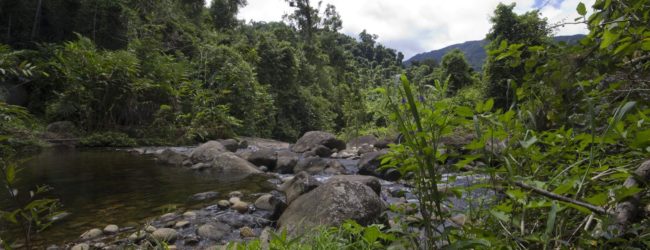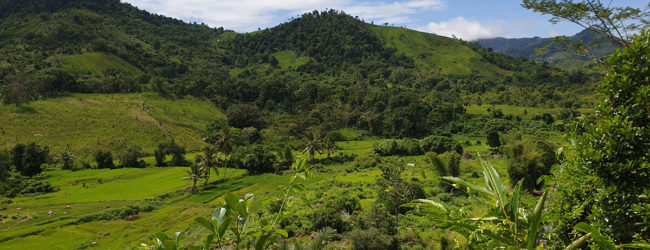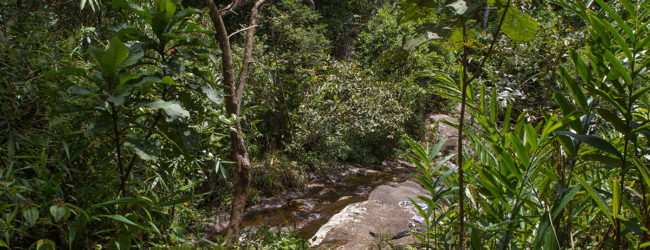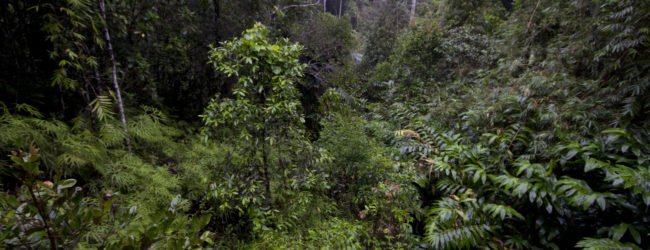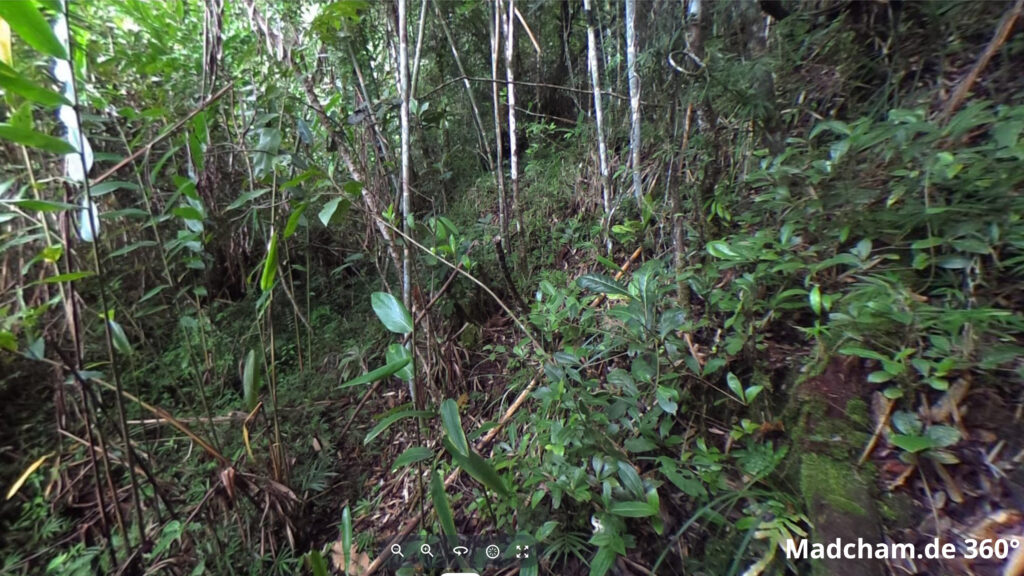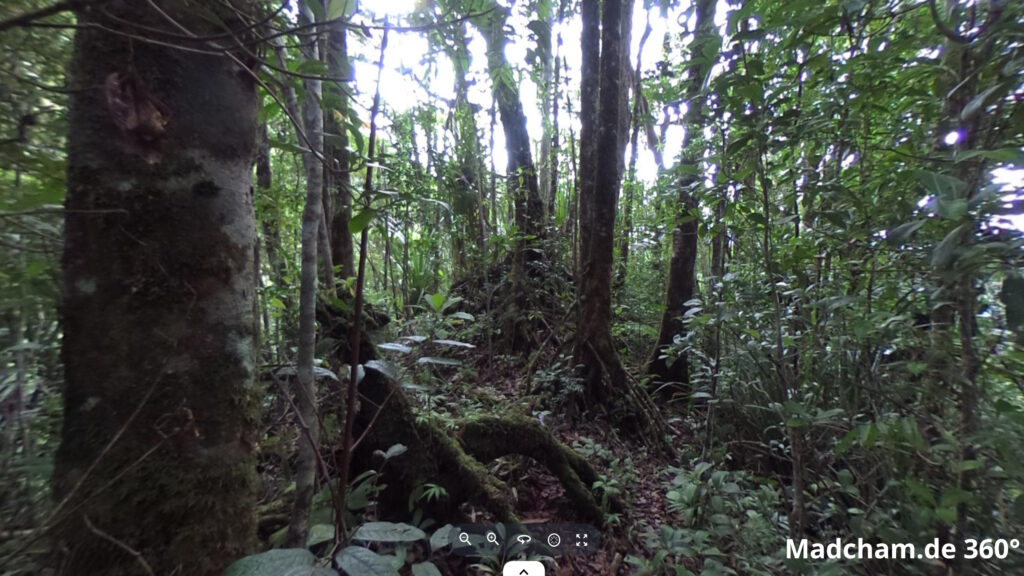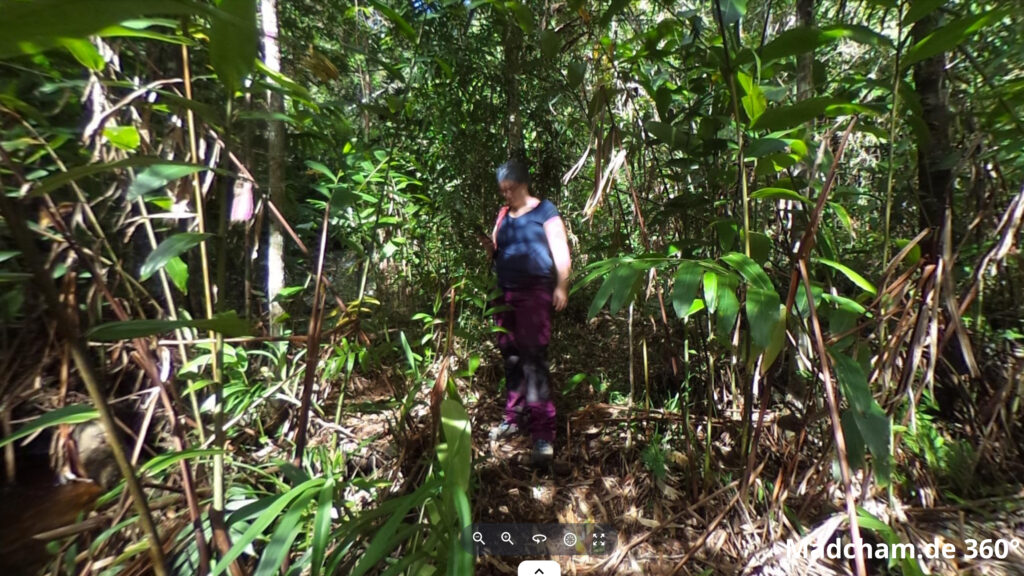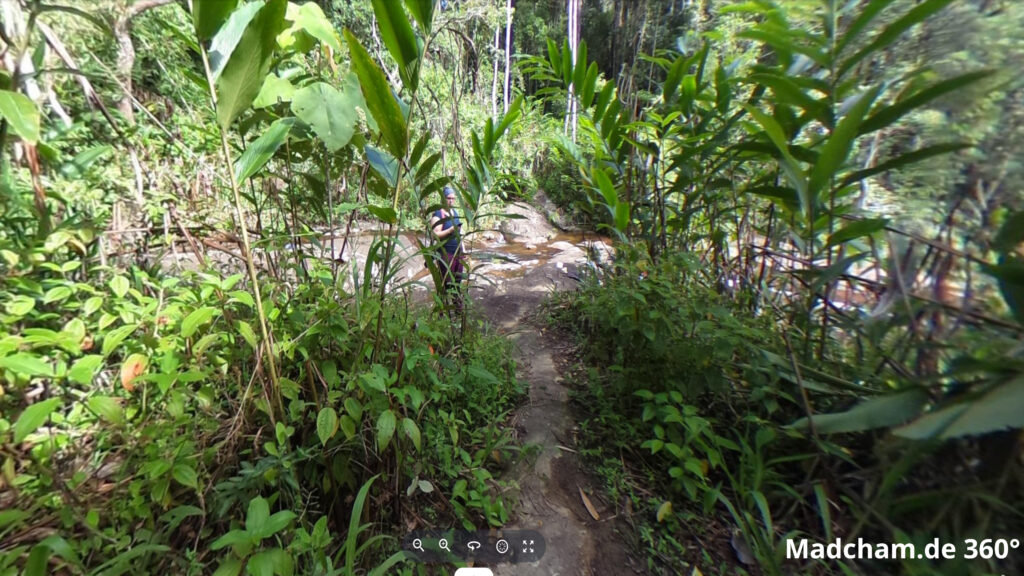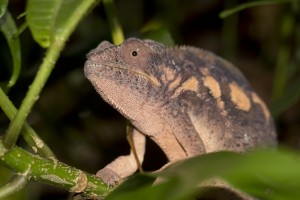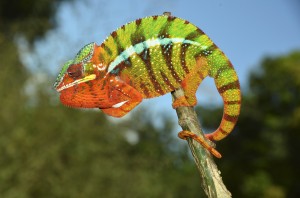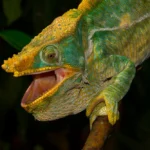Distribution of the local form Marojejy:
Marojejy national park is located in northeast Madagascar on the slopes of the eponymic sacred mountains in the Sava region. About 60 km east of Marojejy, there is the “capital of vanilla”, Sambava. The road that passes Marojejy comes from there and leads to Andapa to the west. Marojejy national park is approximately 600 km² in size, but is difficult to reach due to its remote location and lack of infrastructure. Less than 200 travelers per year come to this park. The only safe way is flights from Maroantsetra or Tana to Sambava and further traveling to Marojejy by car. From the park office, you have to walk along an extremely exhausting path to the national park entry itself. From time to time, you can find panther chameleons in the dense rainforest at elevations of 500 meters nearby Camp Mantella (Camp 1). The forest consists of mainly primary forest and some bamboo here. Further up we have so far found only a single female in 2022 at Camp Marojejy. Distinctly further down, you can find panther chameleons on a regular base at the height of the park entry and before between the rice fields. Males of this local form look similar to those of the Sambava local form. Due to their remote location, several rivers on the way, the extremely rough terrain, and especially the high elevation, we surmise this as an own local form.
Appearance of the local form:
The males wear red bands on the green ground color on the body. The head is usually bright green with red eyelids and radiating red accents. Overall, the males of this local form are much greener in the head area than those of the neighboring local form Sambava and carry hardly any orange accents in normal conditions. When excited, some older animals may become bright red-orange, but this is rarely seen. The following two photos show male juveniles whose colors are not yet fully developed.
Weight table
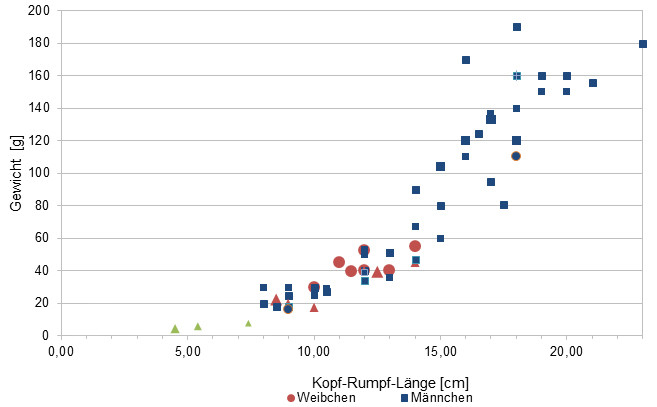
Gewicht = weight in grams, Kopf-Rumpf-Länge = snout-vent-length in cm, Weibchen = females, Männchen = males
Since 2015 we have been measuring the weights of chameleons we have found in Madagascar, as far as the animals (and our scales) are participating. So far there are only a few weights, in the long term an average weight in relation to the snout-vent-length It is important to know that all weights were measured towards the end of the rainy season (= best food supply), so they are probably maximum weights in Madagascar. Triangular symbols in females do not mean pregnant, round symbols mean pregnant. In the case of Furcifer pardalis, contrary to our original assumption, there have been no serious differences in the ratio of SVL to the weight of the individual local forms.
| Jan | Feb | Mar | Apr | May | Jun | Jul | Aug | Sep | Oct | Nov | Dec | |
| Average temperature | 26 | 26 | 26 | 25 | 25 | 23 | 23 | 22 | 23 | 24 | 25 | 26 |
| Minimum temperature | 24 | 24 | 23 | 23 | 22 | 21 | 20 | 19 | 20 | 21 | 22 | 24 |
| Maximum temperature | 30 | 29 | 29 | 29 | 28 | 27 | 25 | 25 | 25 | 27 | 28 | 30 |
| Rain days | 28 | 23 | 27 | 22 | 24 | 21 | 20 | 18 | 23 | 22 | 16 | 25 |
The data given was measured and collected by us over several years using thermometers and hygrometers directly at the locations where the animals were found. ‘Average temperature’ means that the values of an entire month were calculated to an average value, e.g. all measured minimum values of a month were calculated to an average minimum value for February. In plain language, this means that individual peak values of a day can be significantly higher or lower than the average minimum and maximum values, so it is possible that although the average maximum is 29 degrees, it was 33°C or even 35°C on some days of the month.
Marojejy mainly consists of rainforest that extends over the eponymic sacred mountain at elevations of 200 to maximally 2100 m above sea level. In the highest areas, climate is cool and vegetation sparse, but most chameleons live in the warmer dense rainforest below. Marojejy has different altitude levels, each with its own species living in its own climate. In the lowest altitude level it is very warm and humid, in the middle and high altitudes it becomes a little cooler, but not less humid.
In Marojejy, there is few difference between rainy and dry season. Humidity is always very, very high. In the rainy season, precipitation is more intense with rainfalls that may last for days and sometimes are accompagnied by heavy storms. In the dry season, temperatures are a little lower, but it never becomes really cold. And it still rains almost daily. It really cannot become dry in Marojejy during "dry" season. Humidity is the main key factor of this rainforest. In 2022, we measured relative humidity on various days during the rainy season, and the data can be found below.
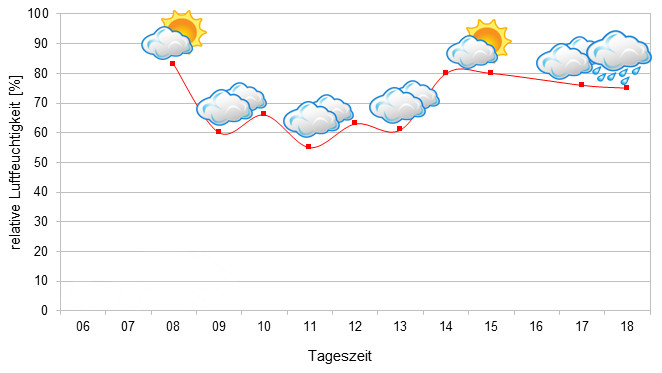
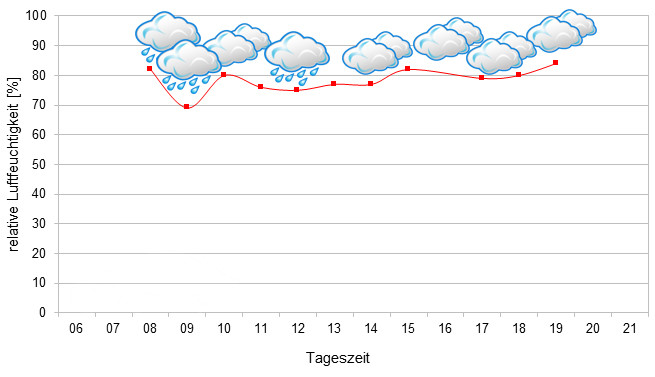
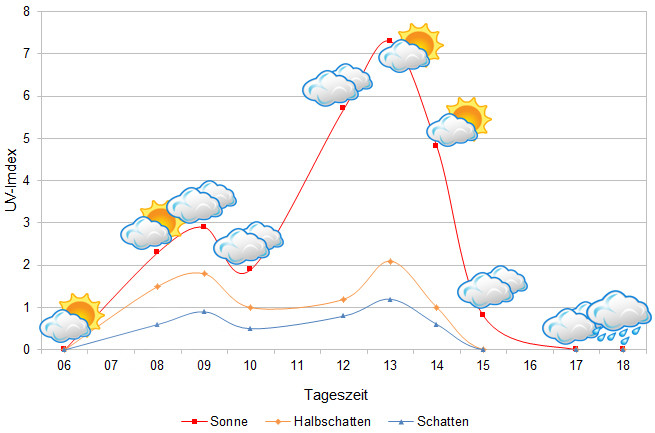
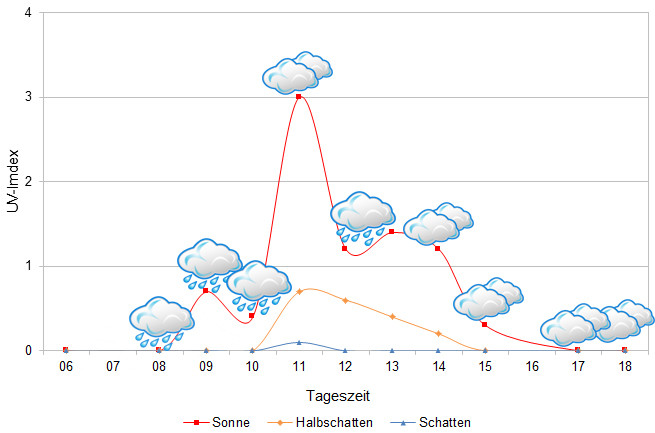
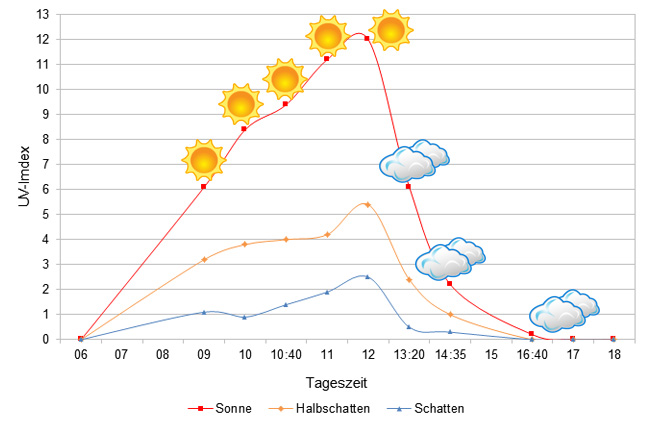
Tageszeit = day time, Sonne = sun, Halbschatten = half shade, Schatten = shade
We have measured UVB data with a Solarmeter 6.5 in spring (end of March until beginning of April) at the peak of activity of chameleons in Madagascar. We always measured the values that a chameleon could maximally reach in its habitat.
Since 2022, in addition to other climate data, we have been measuring air pressure at the locations we visit in Madagascar. The following data is from different days during the rainy season. On the X-axis is the time of day or night. In Madagascar, the day begins around 6 a.m., and night falls at 6 p.m. The Y-axis shows the atmospheric pressure in hPa.
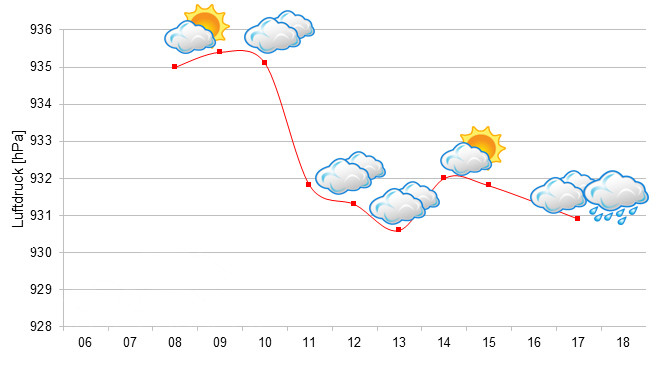
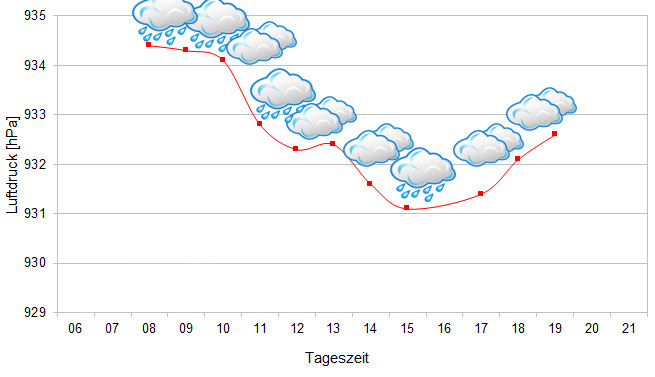
Habitat:
The panther chameleons here can live inside the rainforest that consists of old tree giants, lianas, ferns, and endless masses of moss. The ground is rocky and covered by dense foliage. In front of the park entry of Marojejy, there are more panther chameleons in a completely different habitat that is completely secondary vegetation. They occur in bushes and trees at the edges of ricefields, in some lonely coffee trees, on young tamarinds, and inside vanilla plantations.
Below you will find 360° images of Marojejy that we took during the rainy season. If you click on the respective image, the pictures will open in an enlarged view in a separate window. You can use the mouse to rotate in all directions. You also have the option of running the images in full-screen mode. Enjoy!

